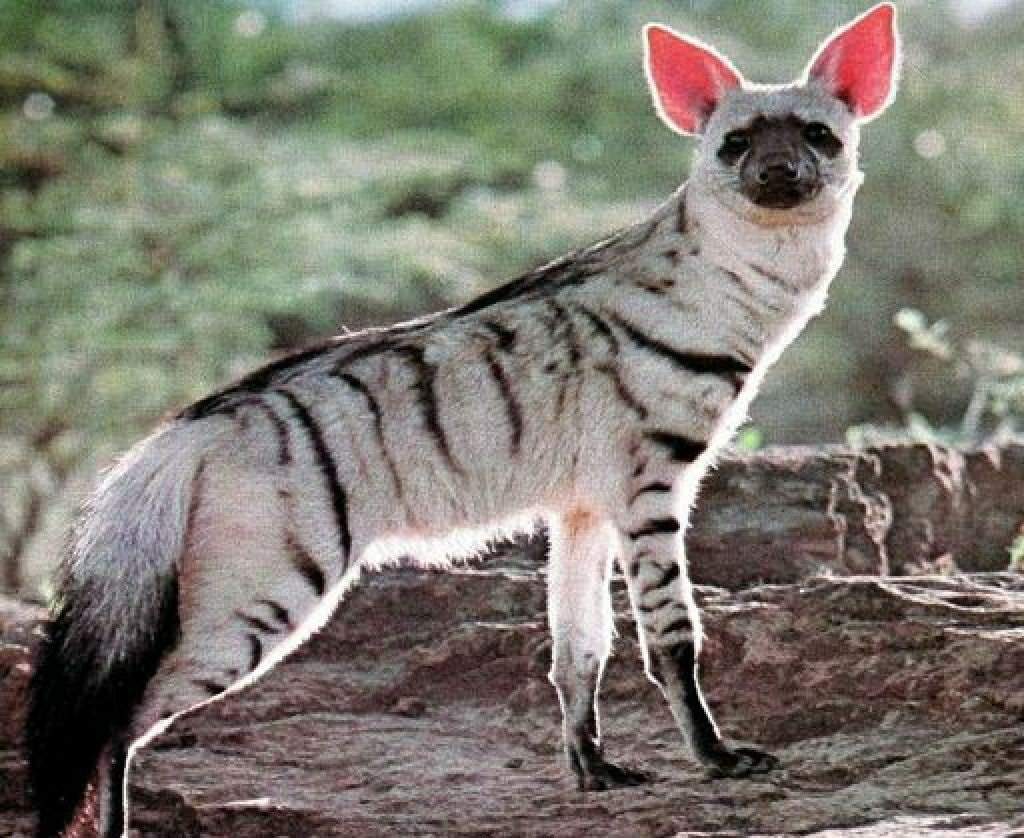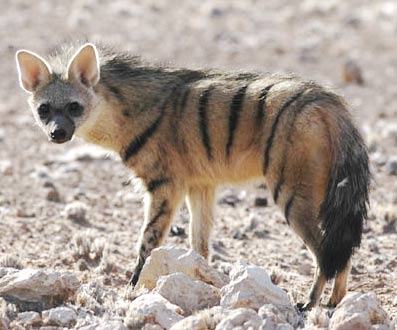If you want to see the aardwolf, you would probably have to visit Eastern and Southern Africa. There the animal moves through the shrublands hunting insects, especially termites.
Aardwolf Diet
The aardwolf is a lower species of the hyenas, one would believe that this wolf type animal would dine on femurs and skulls. But the aardwolf is mostly interested in insects, especially termites. The aardwolf will seek out the termites fortress and devour over 200,000 termite in one sitting. The Aardvark does not destroy the termite mound while feeding, because It often returns to the same mound for hunting.
LifeSpan
The Aardwolf will live up to 15 Years in Captivity and 10-12 years in the wild.
Aardwolf Body Structure
- Weight 8 to 14 KG
- Body Length = 55 to 80 Cm
- Height = 40 to 50 CM
Temperament
The aardvark is basically a shy animal, but that doesn't mean you should go pet one. The aardvark does not approach any other animal and would prefer to run away than stand and fight. Apart from aggressive encounters, territories are maintained by means of depositing (pasting) secretions from the anal gland on grass stalks. Both sexes scent mark (paste), although males mark more than females. Pasting occurs on average more than two times per 100 m moved and about 200 times per night.
Do you take this aardwolf to be yours, till death do you part? Well that is the relationship between male and female aardwolves. This class of ant eater normally lives a monogamous lifestyle. An aardwolf will normally produce 1-5 litters a pop. The Gestation period goes from 90 to 110 days. Young aardwolves usually reach sexual maturity after two years. Aardwolf breeding season is normally between autumn and spring.
After the cubs are born, they spend a little time with their mother in the den until they have gained enough nutrient and strength to see the bigger world. This den confinement last between six to eight weeks. When the cubs come out, they will be foraging food, but the Mother will be their guide until they are independent.
Aardwolf Predators
Wild dogs and humans are the main predators of these termite eating hyenas.
What Sound Does The Aardwolf Make?
- Deep Growl
- Roar
- Clucking
Aardwolf Diseases
Like many wild animals, parasites such as ticks and fleas will be a factor.



 RSS Feed
RSS Feed
